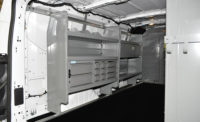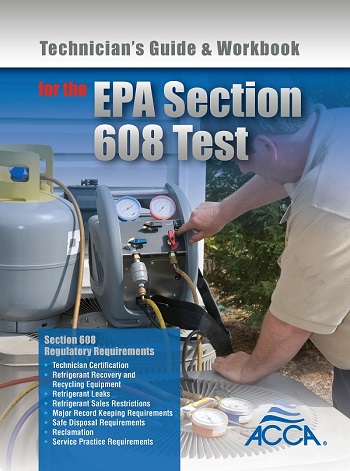Cargo vans that work for you
Manufacturers unveil model year 2019 cargo vans and talk work-vehicle and accessory trends.


Cargo van manufacturers are designing vehicles with service contractors in mind.


In just the past five years, cargo vans have undergone significant improvements — some obvious, such as increased fuel efficiency and connectivity, and others less obvious, such as improved safety features and total cost of ownership.
Meanwhile, manufacturers are working with end users and upfitters to help ensure their cargo vans are as user-friendly as possible.
Big Chances
At Ford, the Transit and smaller Transit Connect cargo vans have rapidly gained popularity in the U.S. market in just a few short years, says Tiffany Chang, Ford brand manager, Transit, Transit Connect and E-Series.
“In 2014, we introduced Ford Transit to replace the venerable E-Series, which had been America’s best-selling van for 35 years,” Chang says. “Earlier this year, we introduced the third generation of Transit Connect with the new 2019 model now on sale. It includes new and exclusive driver-assist technologies; two new drivetrains, including the only diesel in the segment; and unsurpassed capabilities, such as 2,000 pounds towing with the available tow package.”
One safety feature that has become standard on all models of the Transit Connect is automatic emergency braking; other safety features, including pre-collision assist, pedestrian detection, rearview camera and more, are also available.
At Nissan, the NV2500 High Roof Van is particularly popular with plumbing contractors because of its stand-up room in the cargo area and body-on-frame construction. The company has also been working on affordability, says Mark Namuth, senior manager, Nissan Light Commercial Vehicle Sales Operations.
“Those in the industry have taken notice, as our vans have earned the Vincentric Total Cost of Ownership Best Fleet Value each of the past four years,” Namith says. “We have been driven to provide clear distinction between our U.S.-designed, purpose-built van lineup versus the European-based vans now being sold by competitors.”
Efficiency And Connectivity
As contractors continue to trend toward paperless recordkeeping, having connectivity on the road is increasingly more important. Vehicle manufacturers acknowledge this and are designing vehicles with connectivity in mind.
“We know a lot of our commercial customers run their businesses out of their vans,” Chang says. “That’s why we included a standard embedded 4G LTE modem in the new Transit Connect. It provides Wi-Fi for up to 10 devices, while an available 6.5-inch floating touch screen running SYNC 3 helps drivers keep their eyes on the road while they field customer calls and text messages hands-free or navigate to the next service call.”
“The demand for connectivity has helped lead to bigger, more technologically sound display screens,” Namuth says. “Nissan has worked diligently with telematics suppliers to provide fast and easy installation of their products into our vans. And we’ve increased the number of USB ports.”
Though fuel prices have remained relatively stable lately, fuel efficiency is still a major concern for service contractors.
“We have updated our V6 and V8 engines in the NV to improve fuel economy, particularly under full load conditions,” Namuth says. “People tend to focus on what the fuel economy is when the van is empty — which, of course is important — but the key is, what is your fuel economy under full load? This applies to the majority of plumbing applications.”
Ford is also working to improve its fuel efficiency in the Transit and smaller Transit Connect vehicles.
“Ford Transit delivers significantly better gas mileage than Ford E-Series did,” Chang says. “When equipped with the 3.5-liter EcoBoost engine, Transit low-roof regular wheelbase wagons get a 15 mpg city and 18 mpg highway EPA-estimated rating versus the 10 mpg city and 18 mpg highway EPA-estimated rating for the Ford E-Series 6.8-liter V10 premium gas engine.”
The smaller Transit Connect achieves even more efficient ratings, she adds.
“The new 2019 Transit Connect Passenger Wagon just earned EPA-estimated fuel economy ratings of 24 mpg city, 29 mpg highway and 26 mpg combined. These highway and combined fuel economy ratings are the best in its class for gas-engine-powered vans.”
Accessories
Upfitters have also been keeping tabs on cargo van trends over the past few years and are working to stay on top of them. VT Hackney, which makes an all-aluminum customizable shelving system for cargo vans, is one company that “keeps a close watch on van design changes,” VT Hackney Marketing Manager Beth Peacos says.
“Hackney routinely talks with customers to refine product offerings and designs that work best out in the field,” she adds.
Jay Cowie, director of marketing for Ranger Design, which designs and manufactures interior packages for tradesmen as well as shelving, safety partitions, drawer cabinets, accessories and ladder racks, says the biggest shift in cargo vans over the last few years is the number of options available.
“This has shifted our product design to ensure that our options are flexible enough to give everyone the proper storage space for the vehicle they are using,” he explains. “We have also seen plumbers being obliged to carry more fittings with the rise in popularity of PEX fittings.”
Supreme, which makes van bodies designed for service contractors, has also adjusted its product design to accommodate the variety of new chassis types available in the U.S., including the Ford Transit.
“The approach to individual designs for our customers is where we focus our attention,” says Kerri Walker, director of marketing, Supreme Corp. “Customers have individual needs, and we work through additional options and ideas to accommodate these in their product design.”
“There’s been a globalization of vans, starting in 2014, by the manufacturers bringing their vans used in Europe to the U.S.,” says Pete Edwards, director of product development, van storage, at Weather Guard. “Contractors now have more choices than ever for their work vehicles — no matter if it’s a compact sized van, low-roof van or mid- to high-roof van.”
High-roof and mid-roof vans are one of the fastest growing segments in the commercial vehicle market, he adds.
“Weather Guard has expanded and adapted its products for each new make, model and roof height. To keep up with the changing vehicles, we’ve designed bulkhead partitions specific for each vehicle’s unique interior profile and developed shelving that is taller to maximize the increased storage area in the higher-roof vans.”
What's Next
Cargo van manufacturers indicate they are feeling optimistic about the future for the commercial vehicle market and plan to continue growing their offerings.
“We are dedicated to continuing to serve our commercial vehicle customers by designing and manufacturing the vehicles they need to do their jobs and keeping those vehicles on the road through more than 3,000 dealers nationwide offering local service and support, including more than 675 Commercial Vehicle Center dealers dedicated to fleet and commercial customers,” Chang says.
“Nissan is committed to the commercial vehicle market with a full lineup of vans and trucks,” Namuth says. “Our goal is to continue to grow our truck and van business, as evidenced by the launch of the second shift in our Canton, Mississippi, assembly plant where our full-size NV van is produced along with our TITAN and Frontier trucks.”
Peacos agrees the cargo van market “is growing at a rapid pace” and says VT Hackney has seen a marked increase in shelving sales since the cargo van shelving kits launched in 2015.
“Hackney will continue to expand and refine the rugged aluminum shelving kits to meet the demands of service contractors,” she adds.
Cowie also predicts the cargo van market will continue growing for the foreseeable future.
“With the advancements in drivability of cargo vans, I see these becoming more attractive to fleets and tradesmen because of their practicality,” he says. “I can see Ranger Design’s products evolving and adapting as people find new and innovative ways to use these vans, especially in an extremely service-oriented market where the demand for more and more mobile services have spiked.”
Supreme Corp. is also expecting vans to “continue to grow in popularity to align with the increasing need for trades and services,” Walker says. “This includes HVAC, plumbing, electrical, remodeling, construction, and more.”
“Companies are taking a longer look at the new vans in the market and seeing alternatives for how they work today out of a pickup truck, a service body or even an enclosed service body, and Weather Guard is constantly looking for ways to maximize and provide better storage solutions for that space,” Walker says. “The new high-roof vans are becoming an option for them, offering easily accessible enclosed storage and organization.”
2019 Ram ProMaster
Release date: Fourth quarter 2018
MSRP starting at: $31,590
Description: Available in 18 configurations, the ProMaster is Ram Commercial’s Class 2 full-size van. The 2019 Ram ProMaster full-size van benefits from an exclusive front-wheel-drive system, reducing weight and complexity by locating all components beneath the cab. This keeps the cargo-load-floor height and step-in height very low. It also helps in low-traction surfaces, like snow.
Drivetrain: FWD, exclusive versus the competition.
Engine options: 3.6-liter Pentastar V-6.
Popular features and options: Exclusive front-wheel-drive, rear barn doors with over extended opening, high roof, cargo area separator, wood floor, windows all sides.
Warranty Information: Three years or 36,000 miles bumper-to-bumper warranty and five years or 60,000 miles powertrain warranty.
Where to buy: Visit www.ramtrucks.com for a dealer near you.
For more information: www.ramtrucks.com
2019 Ford Transit Connect
Release date: Available now
MSRP starting at: $24,100
Description: The 2019 Transit Connect Cargo Van features new and exclusive driver-assist technologies; two new drivetrains, including the segment’s only available diesel; and unsurpassed capabilities. The best-selling compact cargo van in America, more than 300,000 Transit Connect vehicles have been sold since 2009; of those, 97% are still on the road.
Drivetrain: FWD
Engine options: Standard: 2.0-liter GDI I-4 with Auto Start-Stop technology; available 1.5-liter EcoBlue diesel. Fleets only: 2.5-liter I-4 iVCT I-4 gas.
Popular features and options: Available blind-spot information system with cross-traffic alert, lane-keeping system and adaptive cruise control.
Warranty Information: Three-year, 36,000-mile bumper-to-bumper; five-year, 60,000-mile powertrain; and five-year, 60,000-mile roadside assistance.
Where to buy: More than 3,000 local Ford dealers nationwide.
For more information: fleet.ford.com
2019 NV2500 High Roof
Release date: Available now
MSRP starting at: $28,850
Description: The Nissan NV Cargo provides rugged body-on-frame construction across the entire lineup, including with a high roof — the only van in the segment to offer this, providing most users the ability to walk, stand and work in the cargo area.
Drivetrain: RWD
Engine options: 261 hp 4 Liter V6 and 375 hp 5.6 Liter V8
Popular features and options: The SV grade interior provides a nice upgrade in features at a value price. In addition, our complimentary cargo management system from Adrian Steel is our most popular feature with the plumbing and HVAC tradesmen.
Warranty: 5-year, 100,000-mile bumper-to-bumper warranty
For more information: www.nissanusa.com/vehicles/commercial/nv-cargo
Mercedes-Benz Sprinter Cargo Van
Release date: Late 2018
MSRP starting at: $33,790 for gas and $39,790 for diesel
Description: The Sprinter cargo van includes the Mercedes PRO integrated connectivity solution that takes infotainment systems and telematics applications into a new era.
Drivetrain: RWD for gas and RWD and AWD (4x4) for diesel
Engine options: 4 cylinder, 2.0 L gasoline or 6 cylinder, 3.0 L turbo diesel
Popular features and options: Standard fully loadable wheel arches, standard self-arresting rear door, optional electrically adjustable front seats, optional twin front passenger seat, choice of two loading floors, optional rail systems in the floor, optional LED lighting strips in the load compartment, Mercedes PRO connect, optional MBUX system with 7” or 10.25” screen display, optional active brake assist and lane-keeping assist.
Warranty Information: Powertrain warranty for up to five years and/or 100,000 miles.
Where to buy: Your local Mercedes-Benz Vans or Freightliner Dealership.
For more information: www.mbvans.com
Looking for a reprint of this article?
From high-res PDFs to custom plaques, order your copy today!















